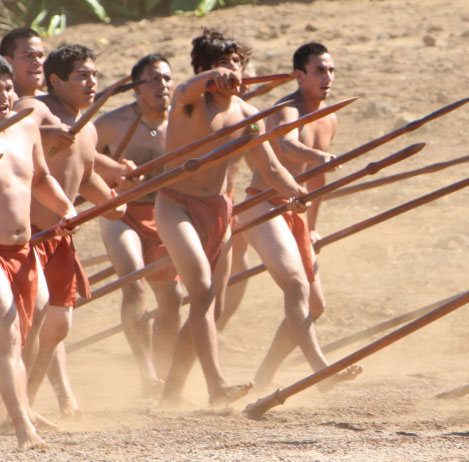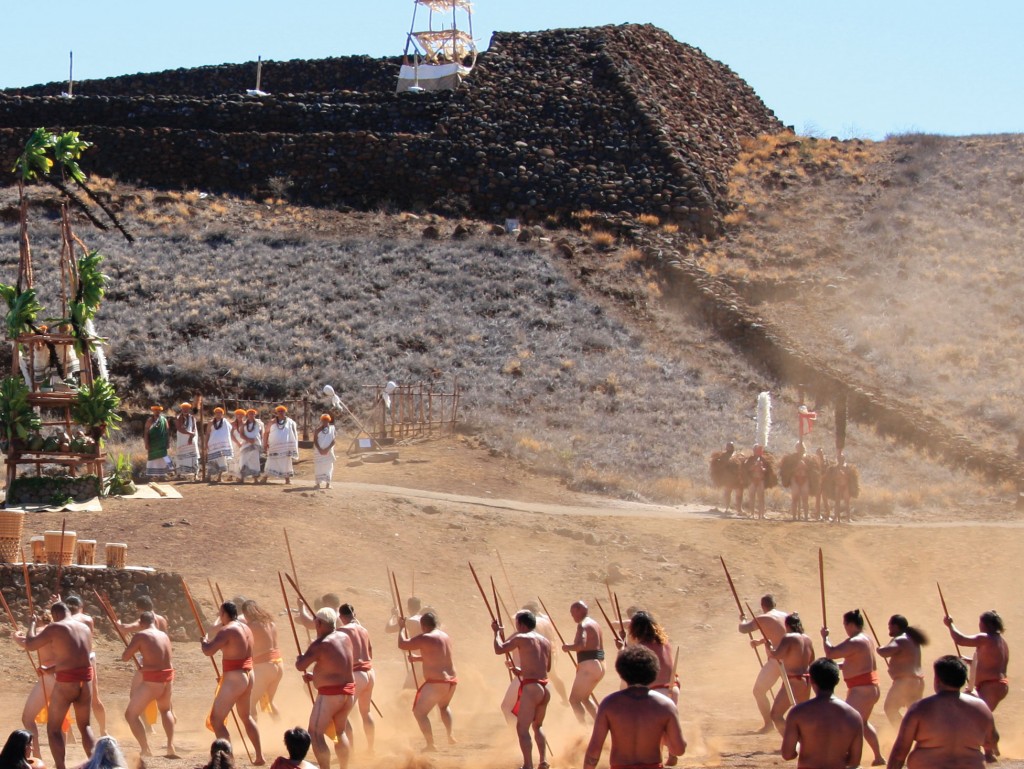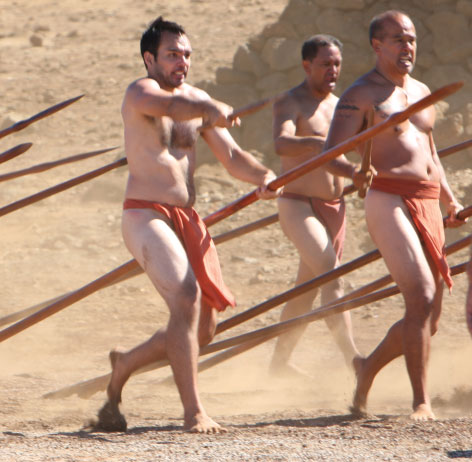The King’s Heiau
As many know, the Hawaiian Islands were first unified through King Kamehameha I. Many, however, do not know the significance of the Heiau at Pu`ukohola on the Big Island of Hawaii. The remains of the Heiau (temple, more directly “spiritual place”) at Pu`ukohola are currently a US National Historic Site. Pu`ukohola, or hill of the whale, is named as it appears like a whale’s tail from below.
 This quite large structure is comprised of loose, tightly fitting, rocks (lava stone) without mortar and is considered the last temple built by the ancient Hawaiians between the years of 1790 and 1791, under the leadership of Kamehameha I. The construction was undertaken due to a prophecy received by Kamehameha that if he built this temple he would achieve his goal of unifying (conquering) the islands. Long human chains, likely miles long, passed the water worn, smooth rocks many miles from Pololu Valley to build the heiau. After the relatively short time of approximately one year, the heiau was completed and the process – through many battles – for unification was underway.
This quite large structure is comprised of loose, tightly fitting, rocks (lava stone) without mortar and is considered the last temple built by the ancient Hawaiians between the years of 1790 and 1791, under the leadership of Kamehameha I. The construction was undertaken due to a prophecy received by Kamehameha that if he built this temple he would achieve his goal of unifying (conquering) the islands. Long human chains, likely miles long, passed the water worn, smooth rocks many miles from Pololu Valley to build the heiau. After the relatively short time of approximately one year, the heiau was completed and the process – through many battles – for unification was underway.
The first step took place when the temple was just completed. Kamehameha’s cousin, Keoua Ku`ahu`ula, who had control of the southern portion of the Big Island, was asked to come to the dedication of the newly built temple. Keo_ua Ku`ahu`ula’s father was the King during the time when Captain James Cook arrived in Hawaii. Ku`ahu`ula saw the temple’s completion as a signal from the gods that Kamehameha would ultimately become ruler of all the islands. Although the invitation by Kamehameha was made simply to bring peace between the two, upon arrival an altercation broke out which ended with the death of Ku`ahu`ula in what is sometimes called the Battle of Kawaihae. By 1775, Kamehameha had also gained control of the islands of Lanai, Molokai, Maui and Oahu. Finally, through an agreement of peace with the King of Kauai in 1810, the islands were unified all under one King – King Kamehameha I.
 Kamehameha’s rule continued until his death in May of 1819. His son, Liholiho (Kamehameha II) inherited the throne. Queen Ka‘ahumanu (one of Kamehameha’s wives) decided that both she and Liholiho should rule the land together. Since Liholiho was young and without experience, this dual governing arrangement is what took place. Kamehameha II is actually most known for the breaking of the ancient taboo (kapu) system of religious laws approximately six months into his dual reign by sitting with Ka`ahumanu and his mother Keopuolani and eating a meal together. Men and women were previously not allowed to eat together. He essentially allowed for the disbanding of the social class of priests and the destruction of temples and images. Christian Missionaries arrived in the islands only a few months later and the course of the islands, with respect to Hawaiian religion, were changed dramatically.
Kamehameha’s rule continued until his death in May of 1819. His son, Liholiho (Kamehameha II) inherited the throne. Queen Ka‘ahumanu (one of Kamehameha’s wives) decided that both she and Liholiho should rule the land together. Since Liholiho was young and without experience, this dual governing arrangement is what took place. Kamehameha II is actually most known for the breaking of the ancient taboo (kapu) system of religious laws approximately six months into his dual reign by sitting with Ka`ahumanu and his mother Keopuolani and eating a meal together. Men and women were previously not allowed to eat together. He essentially allowed for the disbanding of the social class of priests and the destruction of temples and images. Christian Missionaries arrived in the islands only a few months later and the course of the islands, with respect to Hawaiian religion, were changed dramatically.
The structure itself is about 224 feet long by 100 feet wide with walls ranging from about 16 – 24 feet high. Through the efforts of those with Hawaiian bloodlines, the heiau has been carefully preserved and restored. The relatively recent 6.7 earthquake occurring just offshore from the Kona Airport on October 15, 2006 caused significant damage to the heiau has since been restored through the same group, rock by rock.
Pu`ukohola serves as a centerpiece for all those who have Hawaiian ancestry to help them understand where they fit in modern-day Hawaii. Many, who have gone on to have successful careers in fields as diverse as medicine and the military, have found  that they developed a yearning to go back to their roots and learn what it means to be Hawaiian. Some have actually returned to the islands after having been on the mainland for many years to exercise themselves as Hawaiians. They note that they look to connect the past to the present, and beyond, and allow the wonderful Hawaiian culture to perpetuate and continue in the pursuit of continuing Kamehameha I’s unfinished good deeds.
that they developed a yearning to go back to their roots and learn what it means to be Hawaiian. Some have actually returned to the islands after having been on the mainland for many years to exercise themselves as Hawaiians. They note that they look to connect the past to the present, and beyond, and allow the wonderful Hawaiian culture to perpetuate and continue in the pursuit of continuing Kamehameha I’s unfinished good deeds.
The National Historic site in Kawaihae welcomes visitors regularly to a self-guided tour, as well as the opportunity to attend the annual event in August where many of Hawaiian decent come to “ho`oku`ikahi (unite as one) and continue the legacy of their ancestors after unification. This three day event invites Hawaiians to reconnect, rediscover their roots, while rekindling their own characters – learning along the way what it is to be Hawaiian. The event takes place on August 9 -12 in 2012. The public is invited beginning on Friday at around 9:00 AM in the morning and continuing throughout the weekend to come and see the cultural activities which include gift-giving rituals, as well as being allowed to directly participate in various demonstrations and workshops. There are many hands-on arts and crafts demonstrations available that are wonderful to experience first- hand. Remember to bring refreshments and plenty of sunscreen as neither is available for purchase, but both will be needed in this warm, dry area.
If your visit to Maui allows for an inter-island excursion, be sure to place this wonderful site in your plans for a visit. Pu’ukohola Heiau National Historic Site on the Big Island of Hawaii…(including Federal Holidays).
